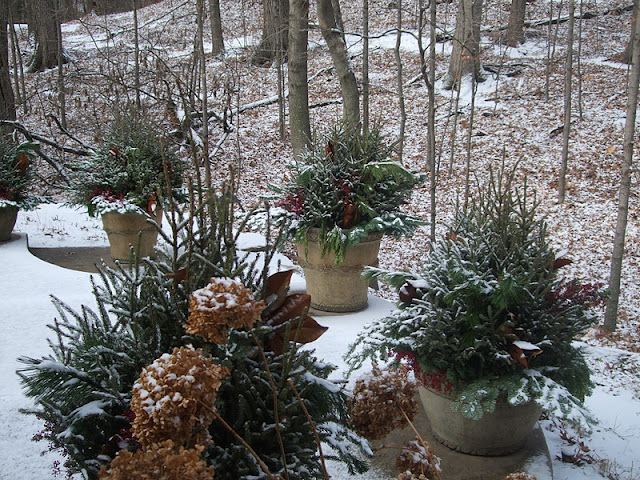As we approach Christmas and the holiday season, there is a flurry of decorating activity (in my neck of the woods this flurry is sped up in hopes of beating the flurries of snow). Houses and trees are trussed with countless strands of lights, porches and stairways are festooned with garland, and Christmas tree branches sag under the weight of glittery baubles, commemorative ornaments, and your kids' macaroni and pipe cleaner hanging picture frame.
But there is one decoration that most people hope will go unnoticed: Mistletoe.
This little sprig of greenery is carefully hung in some out-of-the-way place or hidden in plain sight in hopes that some less observant party guest will "get caught under the mistletoe" and the person who does the catching will get to steal a kiss.
But what is so special about mistletoe? Why does it inspire covert romance? How did this sneaky holiday tradition start?
~~~~~
Let's start with what mistletoe is. The "true" mistletoe is Viscum album, and is the only species of mistletoe found in Europe. The name is translated as "sticky white" because the seeds inside the white berries have a sticky coating. Mistletoe is categorized as a hemi-parasitic plant; it only grows on other trees, and although it has chlorophyll and is therefore capable of making its own food, mistletoe roots into the bark of the host plant in order to absorb moisture and nutrients.
| Cross-section of mistletoe root invading a tree branch. |
America also has a species of mistletoe - Phoradendron flavescens. The berries of American mistletoe can be white, pink or red, earning it the name "Christmas mistletoe". Unlike its European counterpart, this American mistletoe is fully parasitic and is fatal to the host plant, as evidenced by the translation of "Phoradendron": Tree thief. As a result there is much effort in the landscape and arboriculture world to control and eradicate this particular kind of mistletoe.
~~~~~
Now on to the myths. Many stories, myths and customs surround this odd plant, most of them originating in Scandinavia. In the Norse myth of mistletoe, the trickster god Loki plotted against the vegetation god Baldur, whose mother Frigga had solicited an oath from everything of earth, of sea and of sky, that they would not harm her son. However, Loki saw that the mistletoe was rooted, not in earth or sea or air, but in the bark of an oak tree, and thus not covered by Frigga's oath. He fashioned it into the weapon that slew Baldur. Since Baldur was a god of vegetation, his death brought winter into the world. After the other gods eventually restored Baldur to life, Frigga pronounced the mistletoe sacred and ordered that from now on it should bring love rather than death into the world. Happily complying with Frigga's wishes, any two people passing under the plant from now on would celebrate Baldur's resurrection by kissing under the mistletoe.
The latter part of this myth carried over into a Scandinavian custom that if you discovered you were standing under mistletoe while encountering an enemy, both of you would lay down your weapons until morning. (At which point you would pick up your weapons and start fighting again, I guess. So much for bringing love.)
Another myth centers around the color of mistletoe when it dies - gold. In Virgil's "Aeneid"
Calling mistletoe the "golden bough" may have originated in various European folklore. It was believed that mistletoe was brought down to earth when lightning strikes a tree, showering it in a blaze of golden light.
The name by which the plant is best known - mistletoe - has its own little story. Back in the dark ages of Europe when what we now know as science was considered magic, it was believed that mistletoe magically burst forth from the droppings the mistel thrush left on tree branches. The ancient Anglo-saxon word for excrement is "mistel" and the work for twig is "tan"; "Mistel-tan" or "dung-on-a-twig" - became Mistletoe.
With the multiple origins and stories surrounding this parasitic plant, I, for one, am glad tradition stuck with the Old English name of mistletoe. Kissing under the poop-on-a-stick just kills all the charm and romance.

































